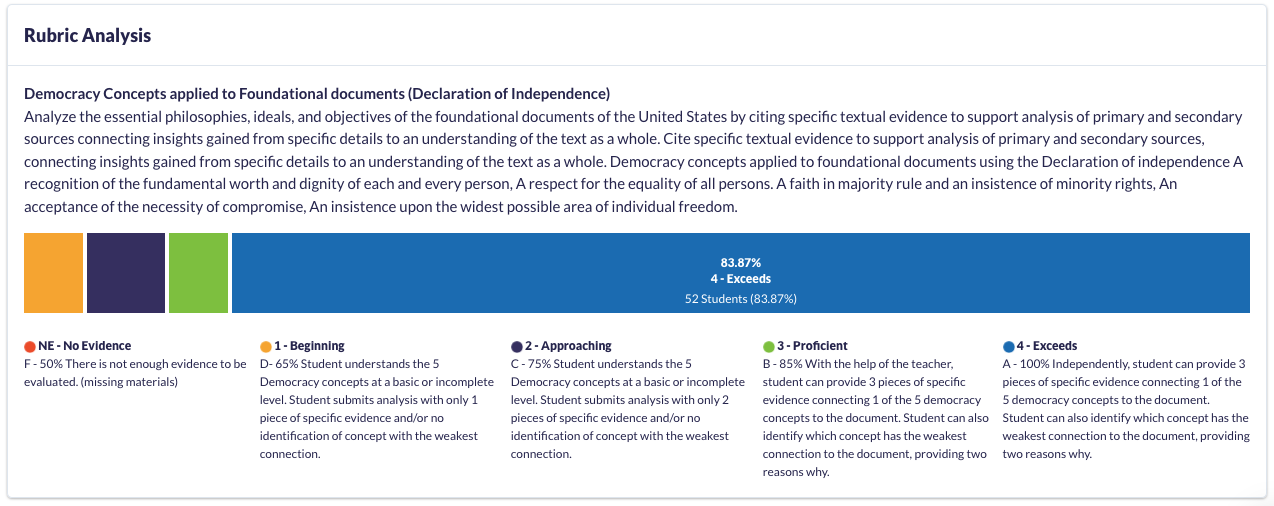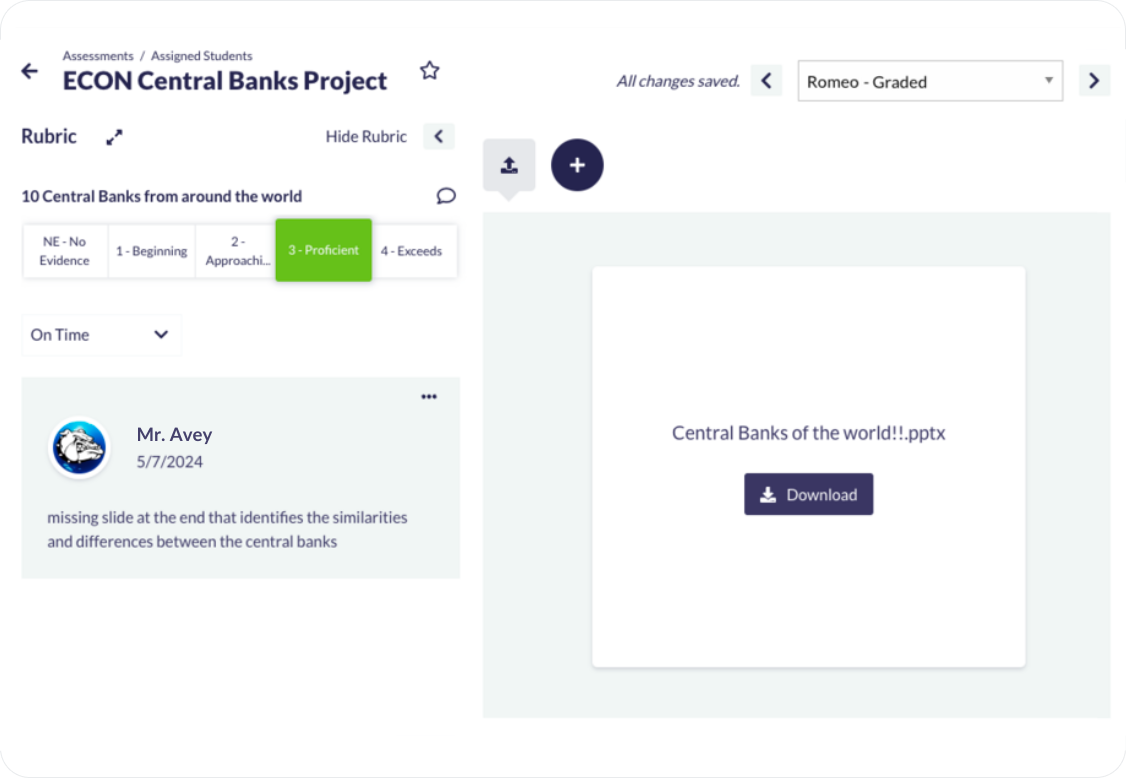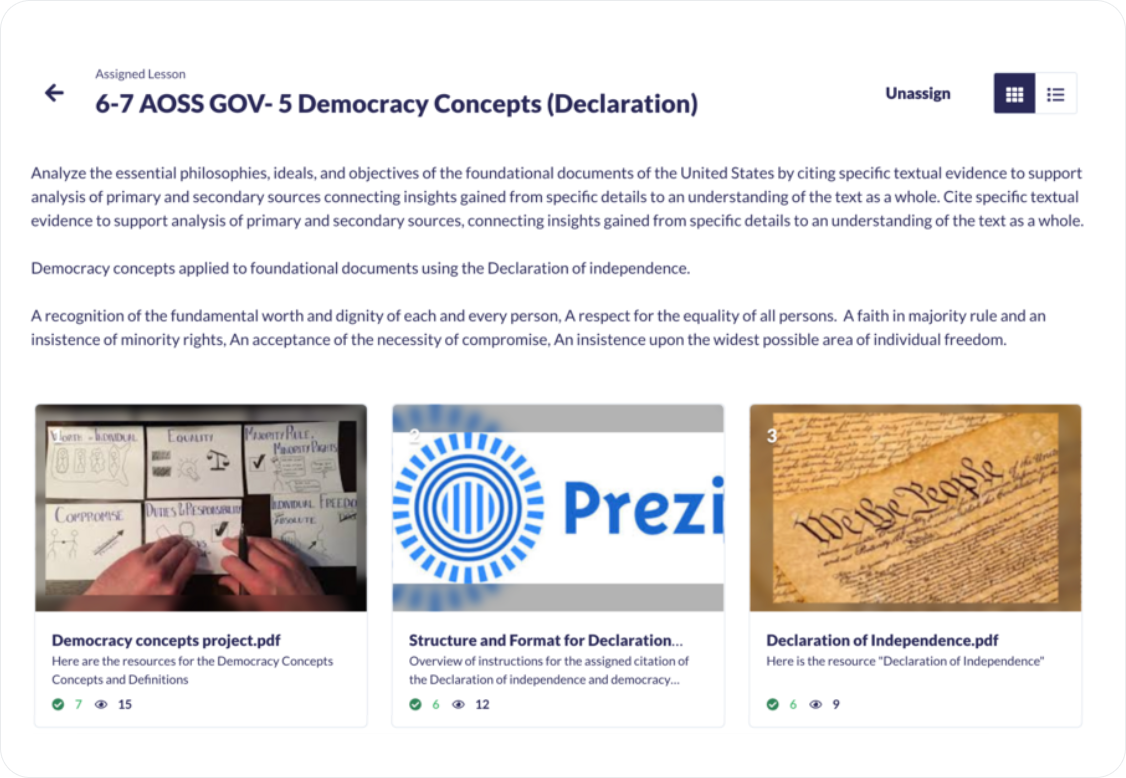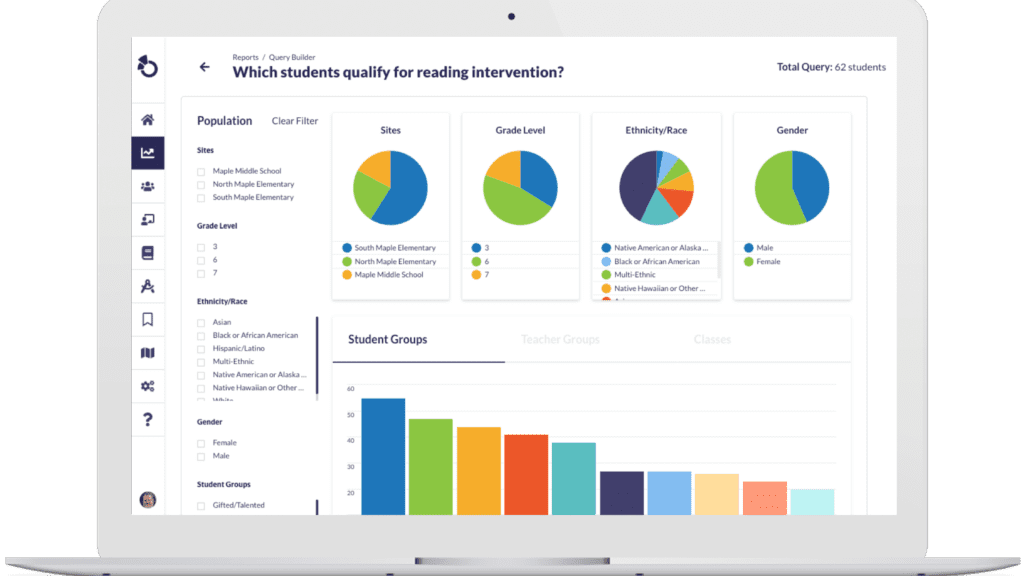Celebrating Growth and Innovation in the Classroom: A Q&A with Tyler Avey on Assessment Strategies
By: David Specht
Otus: What inspired your focus on data-driven instruction and personalized learning in education?
Avey: Personalized learning is something I wish I had as a high school student. A lot of people from my generation were taught what to think and not how to think. There are many ways for students to prove their learning, and I am willing to adapt to meet the needs of each student. Some students are good at testing, while others perform better on projects. I purposefully integrate different assessment types into each Learning Standard, so that each student has the chance to display their learning in a setting that is best for them.

Otus: What type(s) of assessments have you found most helpful in providing evidence you need to understand student performance?
Avey: As most educators probably feel, it seems like I’ve tried it all. The best assessment I use to understand student performance is a personal interview. At the end of a unit, I give students one class period to prepare for the interview. I give them a list of potential questions that they will be asked, and they need to prepare to answer all. I then spend the next two class periods interviewing students one by one in the hallway. Students are allowed a notecard, and generally do a good job being prepared. What they don’t know is that I am grading them based on my follow-up questions. This allows me to see if students really get it or not.
I have had great discussions with many students over the years during these interviews, and I can testify that these moments are the best teaching I do all year. The interviews are great!
Otus: How do you analyze the data collected from your assessments? Are there specific questions you bring to the review/analysis process?
Avey: Our administration and instruction coach do a great job of giving us time to work together and analyze data. We have a form that we work through every week, where we go through a PLC cycle. I have a general idea of where students are at all times, but data has been crucial to catching students who aren’t getting to where they should be academically.
Otus: How do you reflect on the effectiveness of your assessments and make improvements for the future?
Avey: My assessments are either things that I would have found interesting when I was in high school, or essential to life after high school (everyone needs to know how to interview for a job, right?). This year we decided to use Document Based Questions (DBQs) to explore topics that students should know about. In the Fall semester, my classes did two DBQ projects, where they had to make a poster that answered the question, citing their research. This was a fun project, as the other Government teachers in the school did the same project, and our best posters were judged by admin and other staff members. A winner was chosen based on how convincing and creative their poster was, and they were rewarded with a pizza party for their entire class.
We decided that students could take their learning to another level, so for the third DBQ, groups were asked to make a video presentation instead of a poster. The quality of the content in the videos exceeded our expectations, and students really enjoyed the project. It was a risky pivot, but the results paid off. This move was driven by data, as some students did not find much motivation to complete a poster, but most students enjoyed the video assessment.
Otus: How do you involve students in the assessment process so they understand their performance and use the insights to improve?
Avey: I try to be as open and honest with students as possible. One practice I’ve found helpful is to keep the assessment structures the same but use different content for different learning objectives. We use exit tickets before assessments to gauge how much the students understand. Sometimes students can complete a project, and make things look/sound good, but a week later, they cannot remember important details.
The goal of the exit tickets is to ensure that students are still walking away from a learning target with a clear understanding of what is most important. A quick re-teach of the essentials has happened a few times, and students have appreciated that they now understand the “why” behind the assessment.
Otus: What role do professional learning communities (PLCs) play in your development of assessments or analysis of the data?
Avey: I love working with my colleagues! I am in two different professional learning teams (PLTs), but both of my PLTs have been awesome. In my Government PLT, we have become fully aligned in our assessments, rubrics, projects, and most lessons. We collaborate weekly to see what's going well, and what could be better. We have both been using Otus for 4 years. In my Economics PLT, we were doing our own thing for a while but had the chance to team teach a class this year.
Our state passed a law requiring students to learn Financial Literacy, and it was something both of us were intimidated by. We were able to align our ideas through Otus, and things went well. We were able to use data to make minor adjustments, and the Spring semester of Economics was the best I’ve ever had.

Otus: Why did your district choose to adopt Otus? How does the tool support the use of assessment data in decision-making?
Avey: I’m not sure what went into the initial decision to partner with Otus, but we have been using Otus for at least four years. I jumped head first into the platform and it was great. At one point my district was using Standards Based Grading, and Otus did a great job in providing appropriate data for students and families. We’ve since switched to a more traditional points-based grading system, but the approach has stayed similar.
Otus: What tool in Otus has had the most impact on your work?
Avey: Lessons have become the starting point to every class period I teach. In Lessons, students have the access to pace themselves and it’s like an interactive lesson plan. The ability to integrate so many different features has been extremely helpful, and the students learn quickly how to navigate the lesson. Expectations are clear, and when students miss a lot of class time, they are expected to complete their Otus Lessons on their own time.

Otus: Anything else you’d like to share?
Avey: In February, I led a Professional Development breakout session where I detailed the top 10 things I love about Otus. The number one thing for me was the ability to collaborate with teachers! My PLT is constantly updating and sharing lessons with each other, building upon an already solid foundation.
Otus has made my 5 years of teaching more organized and cohesive.
Inspiring Success Through Passion and Collaboration
Tyler Avey’s dedication to personalized learning and data-driven instruction shines through in his commitment to student success. By embracing diverse assessment methods and working closely with his colleagues, Tyler creates an environment where every student can flourish. His innovative and heartfelt approach to teaching demonstrates the incredible impact that thoughtful assessment practices can have on K-12 education.
Related Resources
Request a demo!
See exactly how Otus can help your school accelerate student growth and improve student outcomes – all while saving educators time.





